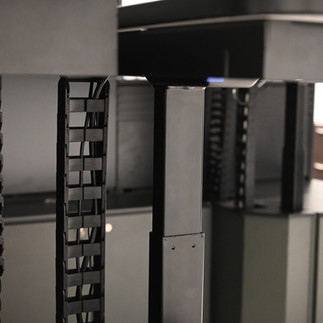The 911 dispatcher guide to an ergonomic emergency control room
- Axel Trujillo
- 19 hours ago
- 3 min read
In today’s fast-paced world, public safety agencies face increasing pressure to respond quickly and effectively to emergencies. At the heart of this mission-critical work are 911 dispatch centers, environments where every second counts and every decision can save lives. These centers rely on specialized workstations known as control room console, designed to support the unique demands of emergency communication.
Unlike standard office furniture, dispatch consoles must integrate seamlessly with advanced technologies such as CAD systems, radio networks, and multi-screen setups, all while ensuring operator comfort during long shifts. Ergonomics, durability, and adaptability are not luxuries, they are necessities. A poorly designed console can lead to operator fatigue, slower response times, and even costly equipment failures.
For agencies planning their first dispatch center or upgrading an existing one, understanding the critical role of console design is essential. The right solution doesn’t just organize hardware; it creates a workspace that enhances focus, reduces stress, and improves operational efficiency. In this blog, we’ll explore what makes a dispatch console truly effective, the latest trends in control room furniture, and how investing in the right design can transform your emergency response capabilities.
How to setup a modern dispatch control room?
Designing a PSAP is more than arranging desks and screens on top of a desk. It’s about creating an environment that supports mission-critical operations and operator well-being. Modern dispatch control rooms are specifically adapted to IT-intensive requirements, just like other types of consoles used in high-stakes environments such as air traffic control or network operations centers.
Let’s start thinking about the overall layout. When planning the distribution and layout of your control room, two categories of factors will guide your decisions:
Tangible Factors
These are the physical elements that define the structure and functionality of the space:
Layout: The positioning of consoles, screens, and equipment to ensure clear sightlines and efficient workflows.
Workstations: Ergonomic consoles designed for 24/7 use, accommodating multiple monitors and integrated technology.
Materials: Durable, high-quality finishes that withstand heavy use while maintaining a professional appearance.
Accessories: Cable management systems, adjustable monitor arms, and storage solutions that keep the workspace organized.
Intangible Factors
These are environmental aspects that influence operator comfort and performance:
Ambient Lighting: Proper illumination reduces eye strain and enhances focus during long shifts.
Temperature Control: Maintaining a stable, comfortable climate is essential for operator alertness.
Noise Management: Acoustic treatments and sound-absorbing materials help minimize distractions in high-activity environments.
Balancing these tangible and intangible factors is critical to creating a dispatch center.
Needs of a 911 dispatch center:
Unlike standard office furniture, dispatch consoles are engineered to meet the unique demands of emergency communication environments. These mission-critical workstations must deliver on four essential requirements:
IT Equipment Support
911 dispatch centers rely on multiple monitors, communication devices, and specialized software. Consoles must provide:
Surface Design: Options like cockpit-shaped surfaces for immersive, multi-screen setups or linear configurations for streamlined workflows.
Size Flexibility: Scaled to fit the purpose of each workstation and the available floor space.
Strength & Durability: High-pressure laminate (HPL) surfaces that are anti-scratch, anti-stain, and anti-static, ensuring longevity under heavy use.
Accessories: Integrated task lights, status indicators, keypads, cooling fans, and urethane edging for operator comfort and equipment protection.
24/7 Durability
Dispatch centers never sleep, and neither can their furniture. Underneath the surface, consoles feature:
A strong substructure: We use a steel substructure, built from 12-gauge steel for unmatched stability.
Cable Chains & CPU Enclosures: Sliding trays with lockable doors for secure equipment housing.
Height Adjustment Actuators: Supporting up to 250 pounds, enabling sit-stand flexibility for operator wellness.
Power Distribution Units: Organized and accessible for uninterrupted operations.
Cable Management
A clutter-free environment is essential for efficiency and safety. Advanced systems include:
Grommet and Monument Solutions: For clean cable routing.
Monitor Arms: Adjustable for ergonomic viewing and space optimization.

Ergonomic Design
Operator comfort directly impacts performance. Features include:
Adjustable Work Surfaces: Promoting healthy posture during long shifts.
Integrated Storage Solutions: Cabinets, drawers, box-file combinations, and extra work surfaces to keep essentials within reach.

Every detail, from the surface finish to the steel framework must serve a purpose. Like to create a reliable, efficient, and operator-friendly workspace that supports life-saving decisions.
Ready to Design a Dispatch Center That Works as Hard as You Do?
Every second matters in emergency response, and your control room should reflect that. If you’re planning a new 911 dispatch center or upgrading an existing one, our design team is here to help. We specialize in creating mission-critical environments that combine durability, technology integration, and operator comfort.
Talk to our experts today and discover how the right console design can transform your operations.













